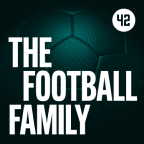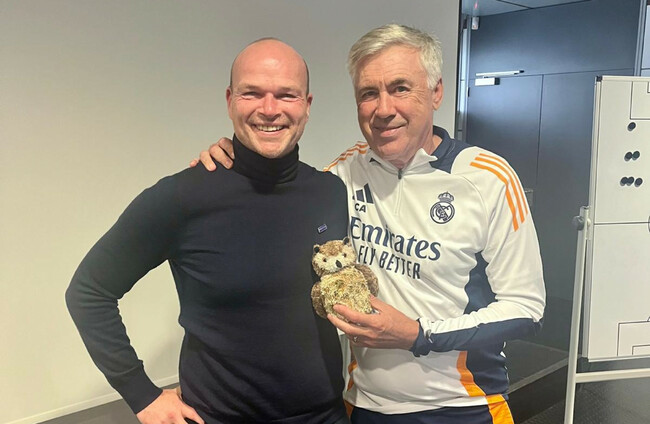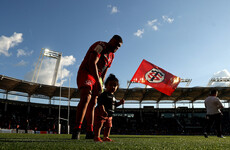ON THE FACE of it, Eamon Devlin was living a nice life.
He was a managing partner in a legal firm in Zurich specialising in investment funds. Very nice and comfortable.
And then, as can happen a man brought up in Culloville, close to Crossmaglen, some stuff from the past swam up to the surface.
“I stopped being a lawyer. I got very ill,” he says.
“Long story short; I got some quite serious therapy to get better. It was all linked to the Troubles, you won’t be surprised to hear.
“I was born in 1978. So I lived through a lot and I saw stuff as a child that no person should ever see. So I had a big black box for everyone to have a look into it, about two years ago.
“So I ended up getting a load of therapy to try to get better and that’s how I fell into psychology. I thought, ‘Oh, this is very interesting, how the brain operates!’”
He done an about turn. Took on a Master of Science degree in psychology at Brunel University, London. His dissertation, and this might have stretched a few charged with reading it, was on half-time team talks, mainly in Gaelic football.
From then he has continued to a Doctorate in Leeds Beckett University, while living in Oxford.
His dissertation found that there was something significant lacking. Across several sports, players weren’t in any way satisfied with how half-time breaks were run and felt they got little from them.
It didn’t surprise Devlin. He had spent deeply frustrating evenings in Zurich watching his daughter Zoe playing U10 soccer. He team were beaten by double figures every week.
“The higher the beating, the more the coaches spoke and shouted at the players. And it got worse and worse as the beatings got worse,” Devlin says.
“In one game, it was 24-0 by the end. And I recorded how long the lecture from the coaches to the players would go on for. It was nine minutes long.”
On the way home, Zoe told her father she had enough. She couldn’t take any more. Not of the football or the beatings. But the coaches.
“So I remember thinking, ‘That’s a crazy outcome for those coaches and for a little girl. There must be a better way of communicating in sport.’”
Roll on to January 2024. Eamon Devlin is living in Oxford and formed a company, ‘Minute 9’. They offer their services to coaches, clubs and teams about how best to maximise their half time.
Any clients we might have heard of?
They are not permitted to disclose some names of clients, bound as they are by confidentiality, but they work with Real Madrid manager Carlo Ancelotti, the five-time Champions League winner, for one.
Then, there’s the Welsh men’s and women’s national teams. Racing 92 and Stuart Lancaster, Aussie Rules reigning champions Brisbane Lions, and Inter Miami. Among others!
So let’s get down to it. What does a proper half-time team talk look like?
“You try to make sure they are ready to listen. So we have various techniques that we use with teams. We get them into a place where they are better to be ‘still’, patient and ready to engage with information,” says Devlin.
“Colours and music are part of those techniques. We work on the coaches too, to make it a bit more impactful. It’s a mixture of getting them to regulate, to get their own emotions under control.
“It could be as simple as just eating something. We recommend that to all coaches.
“Why would you eat? Well, a coach at any level would suffer from ego depletions. It basically makes you feel very tired and your glucose levels collapse.
“If you are working at a top level, trying to disseminate information and there are umpteen distractions, you have to block stuff out. So just eat something. A Jaffa cake, whatever. The outcome is a glucose collapse, so something sugary.”
Then, it’s about the information. And it has to be packaged well.
“We are always trying to find new ways of getting information to players, particularly if there are many languages in the dressing room.
“We look at the stress and cortisol levels of coaches and players at the break. It’s frighteningly high sometimes, the pressure people are under. So we find that we try to make half-time less serious.
“We would say, ‘if you want your players to listen, they need some downtime.’”
This is where the old world meets the new. Earlier this month, Ancelotti told some reporters of his deep frustration around mobile phones, saying, “The new generation are addicted to phones. I said; ‘I’m tired of seeing your phones in the locker room. From now on; no more.’
“The players asked: ‘Are you joking?’ ‘No, I’m very serious.’ After training, the captain said: ‘You can’t do this. This can’t happen!’. Imagine! (laughs)”
It’s fair to say the majority might agree with Ancelotti, believing too much to be at stake in professional sport for players to spend critical time on their phones around an important game.
But this is where Devlin explains a different logic at work.
“When we look at things in football we examine levels of cortisol, eye movement, other ways of measuring stress. And it is extremely, phenomenally high,” he says.
“We realise that some players didn’t have their phones when half time came. And they hadn’t phones for three hours by now as they had left them on the bus, this particular team in England.
“So we went to the manager and made the point that, ‘You do realise that most of your players are addicted to their phone?’ And he agreed.
“So we asked, “What happens when people haven’t got their hit with their addiction?’
“It’s no different to coming off alcohol. It alters your mood. And if you do it too often, it becomes an addiction. So we asked, maybe just give them their phones for a bit. But making it very clear that if you have your phone, then the objective is to relax. If you think that helps you.
“We encourage managers to give players more control for the start of half-time. But once you are back in as a team, the player should be ready to listen.”
So much of this is really trying to uncoil managers who feel that the best preparation involves layering tactical instruction on thick, thereby leaving nothing to chance. But that frequently has a negative effect.
One manager recently was in touch and flustered with the belief that his players weren’t following his instructions.
“We then tracked how often this manager was speaking to the players on game day. We wondered what he was giving to players. How much and how often he was doing it,” Devlin explains.
“We realised on away days that this manager was speaking to the players too often. At the breakfast in the hotel. Invariably before they got onto the bus. Sometimes he would speak to the players on the bus if they were half way to the game.
“Pregame, which was a lecture from him. Half time, which was another lecture from him and his management circus. And then a few bits and pieces post-game.
“So we said to him, ‘Look, you’re speaking to your players seven times.’
“Speaking to them for around 27 minutes, about 4,500 words. It’s a lot.
“Sometimes you have to realise that ‘this is the volume’, and wonder what is happening with all those words. And the answer is that they are forgotten.”
In Irish sport, there is no more famous example of the impact a half-time talk could have, than the one that inspired Devlin’s dissertation; that of Armagh manager Joe Kernan shattering a commemorative plaque from his lost final in 1977 in the Croke Park dressing room. Straight after, the Armagh team overturned a half time deficit against Kerry and delivered their first All-Ireland title.
“I spoke to three of the players in the changing room that day. And all three said, ‘That performance by Joe gave me the fuel to believe I could win the game,’” he recalls.
“Now the performance itself doesn’t win you the game because the players themselves do the stuff on the pitch.
“But it is an example of story telling. We would rank Joe’s, as we have come across many half time team talks now on our travels from different sports. Joe’s is one of the best in the world we have ever come across.
“You have so many things. The five senses; seeing, smelling, hearing, tasting, touching.
“Joe standing up with the loser’s plaque, firing it into the shower, breaking it into loads of pieces. Bits of wood flying around and hitting players. The sense of hearing is triggered; he is saying what the medal means to him is nothing. I have felt like a loser for the last two and a half decades of my life.
“So the sense of hearing is triggered. Sense of seeing is delivered because it is a very visual performance.
“And then sense of touch, with little things flying around the dressing room are flying around, they are hitting your skin. So it’s very hard to escape that experience.”
Watch out Vinícius Júnior and Luka Modrić. Carlo’s on the lookout for a plaque.














Petit for Coquelin.
Pires played with Lauren for 6 years and went unbeaten for a whole season, winning the double on two occasions. He played with Dixon for 2 seasons.
He also trains with Arsenal on a regular basis, which may explain why he has picked current players rather than players like Ian Wright, with whom he has never played.
As for Fabregas’ omission, I think Bobby understands the difference between a player who forces his way out of a club and a player who forces his way into a club, which is exactly what Coquelin did after being on the brink of fading into obscurity last season.
Cazorla’s inclusion is questionable. Apart from that I see little issue with it.
Cole forced his way out.. Also I wouldn’t say Fabergas forced his way anymore than Veria..
Pores should have himself in the team, one of the premierships most underrated players
Robert est petit biased avec his French amis C+ for effort
What about overmars?
Campbell for Koscielny. Fabregas for Coq Pires for Cazorla.
Needs a few more league and European medals in it!
Liam brady has to be in
Marc overmars
Brady, Wright and Dixon have to be in the team. Strong shout for Overmars and Fabregas. O’Leary surely at least on the bench.
Freddie ljungberg should surely get a mention!!! a class footballer!!! (man u fan)
Lee Dixon for Lauren
Wouldn’t mind having some of those name on the team sheet now. Sanchez will become an Arsenal ledge but Wright is one. Not sure if Manu Petite should be missing. Choqulin also learning his trade and becoming the defensive midfielder we’ve lacked for last 6 or 7 years
No Freddie ?
I would put Lehmann in goals, surely he would have more clean sheets than Seaman